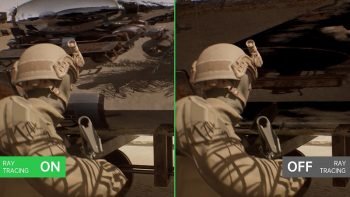
Oppo Brings Ray Tracing Technology to Mobile Platforms
As far as console and PC gaming goes, “ray tracing” has definitely been one of the biggest buzz-words in the gaming industry, and with good reason. The feature allows consoles and computers to process more complex and high-end graphics for a more visually-immersive experience – everything from shadows, lighting, reflections and other optical effects are made more realistic with help from high-performance hardware.
With that said, Oppo has been working with Qualcomm to bring ray tracing capabilities to mobile gaming platforms, a feat not easily achieved given the limited power and size of the hardware involved. In particular, Qualcomm’s newly-announced Snapdragon 8 Gen 2 processor has made such a feature possible, and the two brands have collaborated with some rather impressive results, which were shown off during the Snapdragon 2022 Summit, held in Hawaii.
Meet “Camp Guard”
For this, Oppo developed a first-person shooter game scene called “Camp Guard” with over 2,000 physical models, 800,000 triangles, and close to 100 textures. The company worked with Qualcomm Technologies for driver testing, shader optimization, and compiler tool development for Camp Guard. This also included optimizing the PhysRay Engine 2.0 drivers, so that the new Snapdragon mobile platform can render different ray tracing effects and textures smoothly.
Oppo supports Qualcomm Technologies’ Variable Rate Shading (VRS) technology, ensuring that PhysRay Engine 2.0 can run efficiently on the Snapdragon 8 Gen 2, improving the graphics immensely while solving the power consumption problem. This resulted with the game running smoothly at 720p 60fps, with accurate lighting, movement and shadows for half an hour on a device powered by the Snapdragon 8 Gen 2.
In the demo, when a soldier wearing camouflage is camping in front of an oil tanker, his shadow corresponds to his movement in real time. With Oppo’s Ray Traced Shadow and Alphatest, the shadow of a palm tree on the oil tanker changes according to the wind and camera angle, adjusting its gradient and shape as needed.
This also works for off-screen objects, which can also be rendered, such as soil, water, and other in-game graphical elements. Since Oppo’s PhysRay Engine supports all basic Physically-Based Rendering (PBR) textures, even light-reflective surfaces such as bullets can interact with lighting, resulting in more realistic-looking graphics. The demo was also able to showcase water effects in a realistic manner, including sunlight reflections, ripple marks, and transparency.
Oppo and PhysRay
Oppo began its work on ray tracing technology back in 2020, collaborating with creators and game developers for its work on the “PhysRay Engine”, which is designed to handle ray tracing on mobile devices. In the following months, Oppo reached out to chip manufacturers to work together in creating new hardware and software solutions for mobile ray tracing by adding new features based on market demand, and adding more diverse textures to the support list.
This year, PhysRay Engine 1.0 was made available for modification and redistribution for Oppo’s global developers. This was followed by the release of PhysRay Engine 2.0, which integrates advanced ray tracing capabilities, including Oppo-exclusive ray tracing effects, global rendering pipeline, and offline full path tracing. In addition to this, Oppo also partnered with 3D game engine giant Unity, integrating its ray tracing solution into the Unity game engine, providing immersive graphics for users while delivering high-efficiency developing environments for developers.
Oppo has designed PhysRay to be an open solution with its availability to global developers and creators, as well as a convenient solution thanks to support for hybrid rendering of ray tracing and rasterization. It’s also adaptive thanks to its ability to dynamically adjust the complexity and efficiency of the ray tracing algorithm, and is a well-balanced ray-tracing solution thanks to Oppo’s collaboration with Qualcomm and its newest Snapdragon 8 Gen 2 platform.
With all this said, it should be interesting to see how mobile gaming evolves with such technology available, and given the advancement of hardware and software progress in recent years, it shouldn’t be too surprising to see more AAA game ports on mobile platforms soon. Hopefully we see more improvement with Oppo’s ray tracing efforts in the months and years to come.